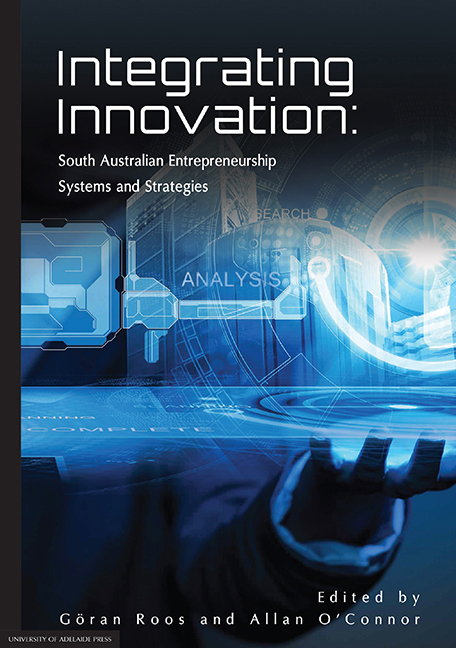Book contents
- Frontmatter
- Contents
- Chapter Abstracts
- Notes on Contributors
- Foreword
- Introduction
- Part 1 Regional-level perspectives
- Part 2 Firm-level perspectives
- Part 3 Innovation management perspectives
- 8 Complex systems adjusting stability levels and providing entrepreneurial opportunities
- 9 Intellectual capital system perspective: A case study of government intervention in digital media industries
- 10 A diagnostic tool for assessing innovation readiness
- 11 Developing a framework for the management of Critical Success Factors in organisational innovation projects: A case of Enterprise Resource Planning systems
- Conclusion
10 - A diagnostic tool for assessing innovation readiness
from Part 3 - Innovation management perspectives
Published online by Cambridge University Press: 05 February 2016
- Frontmatter
- Contents
- Chapter Abstracts
- Notes on Contributors
- Foreword
- Introduction
- Part 1 Regional-level perspectives
- Part 2 Firm-level perspectives
- Part 3 Innovation management perspectives
- 8 Complex systems adjusting stability levels and providing entrepreneurial opportunities
- 9 Intellectual capital system perspective: A case study of government intervention in digital media industries
- 10 A diagnostic tool for assessing innovation readiness
- 11 Developing a framework for the management of Critical Success Factors in organisational innovation projects: A case of Enterprise Resource Planning systems
- Conclusion
Summary
Introduction
Creativity and support for new ideas, their experimentation and development, are key characteristics of innovativeness. Nonetheless, new ideas are not born in ‘the full glory of their potentials’ (de Bono, 1985). Research has found that for an average of 3000 raw ideas, only one of them reaches the last stage of profitable commercialisation (Kuczmarski, 1996; Stevens & Burley, 1997). It takes both effort and resources to develop and add value to these ideas so that they become marketable. However, even the allocation of additional resources to support further development may not guarantee the desired results. The degree of success of the innovation and commercialisation process is dependent on a wide variety of factors.
According to previous studies, innovation capabilities/practices can be categorised into strategy (Cooper & Kleinschmidt, 1995; Goffin & Pfeiffer, 1999), systems (Christensen, 1997; Leonard-Barton, 1992) and culture (Burgelman, Maidique, & Wheelwright, 2004; Chiesa, Coughlan, & Voss, 1996). However, each research stream looks at innovation capabilities from a narrow perspective. Previous studies have not defined a set of comprehensive innovation capabilities measures that translate innovation inputs into profitable outputs. In contrast, the relationship between innovation capabilities/practices and business performance has been extensively investigated at the industry level (Cooper & Kleinschmidt, 1991; Guan, Tang, & Lau, 2009; Huff, 1990), but not at company level (Adams, Bessant, & Phelps, 2006). Furthermore, these industry-level studies focus largely on measuring innovation capabilities/practices as monetary inputs in the form of R&D spending or staffing levels, rather than focusing on the capabilities that turn inputs/spending into profitable commercialisation.
The model of this research study captures a common set of innovation- and entrepreneurship-related competences and capabilities that support the innovation and commercialisation process. Using this model may raise the success rate of the conversion of new ideas into marketable products or services. Better still, adopting a balanced approach to this model promises to maximise the financial performance of innovation as well as achieve other strategic objectives such as quality.
Currently, many companies do not adopt a balanced approach. A personal observation, especially among many R&D research centres and laboratories that the author has worked for or visited, is that these entities usually take a biased stance towards the internal view of innovation.
- Type
- Chapter
- Information
- Integrating InnovationSouth Australian Entrepreneurship Systems and Strategies, pp. 303 - 326Publisher: The University of Adelaide PressPrint publication year: 2015



